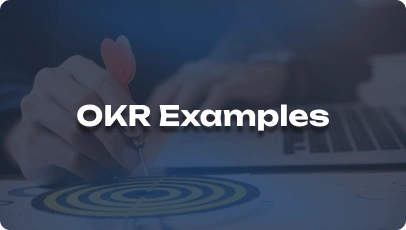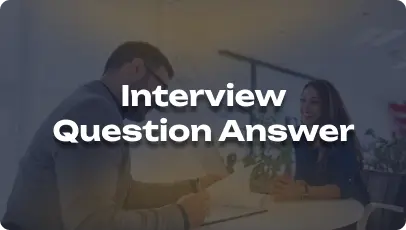Packaging Engineer Job Description: A Complete Guide for HR Professionals
What does a Packaging Engineer do, and why is this role essential for your business? In today’s competitive market, product packaging is just as important as the product itself. A Packaging Engineer plays a crucial role in designing, developing, and implementing packaging solutions that not only protect products but also enhance brand appeal. For HR professionals, understanding this role is key to hiring someone who can balance creativity with technical expertise to optimize packaging processes.
In this guide, we’ll explore the responsibilities, required skills, and qualifications for a Packaging Engineer. Whether you’re looking to hire your first Packaging Engineer or refine your job listings, this guide will provide you with the insights you need to make informed decisions.
What is a Packaging Engineer?
A Packaging Engineer is responsible for designing packaging systems and materials that are functional, cost-effective, and sustainable. They work across various industries including food, electronics, pharmaceuticals, and consumer goods, ensuring that packaging solutions meet product requirements and comply with safety regulations.
This role involves collaborating with cross-functional teams like product design, marketing, and manufacturing to ensure packaging aligns with both functional and aesthetic needs. The Packaging Engineer also performs tests to ensure that packaging can withstand handling, storage, and transportation challenges.
Key Responsibilities of a Packaging Engineer
A Packaging Engineer’s role is critical to product integrity and consumer experience. Here are the core responsibilities associated with the job:
- Designing Packaging Solutions: Create innovative packaging designs that balance product protection, user convenience, and cost-efficiency.
- Material Selection: Identify and select appropriate materials for packaging, considering sustainability, cost, and product requirements.
- Prototyping and Testing: Develop prototypes and conduct tests to evaluate packaging performance under various conditions such as handling, transportation, and storage.
- Compliance and Safety: Ensure all packaging solutions meet industry regulations and safety standards.
- Cost Optimization: Collaborate with procurement and manufacturing teams to ensure packaging designs are cost-effective and scalable for mass production.
- Collaboration with Cross-Functional Teams: Work with marketing, product design, and logistics teams to ensure packaging aligns with brand standards and operational requirements.
- Process Improvement: Continuously seek ways to improve packaging designs and processes for better efficiency, sustainability, and cost reduction.
- Supplier Management: Liaise with packaging suppliers to ensure materials and designs meet company specifications and timelines.
Take Your Team to the Next Level with Advanced HR Tools!
Streamline & Automate your HR Processes From Hire to Retire
Required Skills and Qualifications
Finding the right Packaging Engineer means identifying candidates with a balance of technical knowledge and creative problem-solving abilities. Here are the essential skills and qualifications to consider:
1. Essential Skills
- Technical Proficiency: Strong knowledge of packaging materials, processes, and equipment, along with an understanding of product design and manufacturing requirements.
- CAD and Design Software Skills: Proficiency in Computer-Aided Design (CAD) tools and software for developing packaging designs and prototypes.
- Project Management: Ability to manage multiple projects, timelines, and stakeholders while ensuring on-time delivery of packaging solutions.
- Problem-Solving: Strong analytical and problem-solving skills to address issues related to packaging design, material selection, and production processes.
- Attention to Detail: Meticulous attention to detail, especially when testing packaging durability and compliance with regulations.
2. Preferred Qualifications
- Education: A bachelor’s degree in Packaging Engineering, Mechanical Engineering, Material Science, or a related field.
- Experience: 2-5 years of experience in packaging design, preferably in a similar industry such as food, electronics, or consumer goods.
- Certifications: Certifications in packaging technology, sustainability, or project management are advantageous.
- Familiarity with Industry Standards: Knowledge of ISO, ASTM, and other packaging-related standards is preferred.
Salary Expectations and Career Growth
1. Salary Expectations
- Average Salary: The average salary for a Packaging Engineer in the U.S. ranges from $60,000 to $95,000 per year depending on experience, location, and industry.
- Location: Salaries tend to be higher in metropolitan areas with a large concentration of manufacturing and consumer goods industries.
- Experience: Entry-level engineers may start at $60,000, while senior engineers with 5+ years of experience can earn upwards of $95,000.
- Industry: Packaging engineers in specialized industries such as pharmaceuticals or electronics may command higher salaries due to the complexity of their work.
2. Career Growth Opportunities
- Packaging Engineer to Senior Engineer: With experience, engineers can move into senior roles, taking on more complex projects and leadership responsibilities.
- Transition to R&D or Product Design: Packaging Engineers often collaborate closely with R&D and product design teams, making it easy to transition into those fields over time.
- Specialization: Engineers may choose to specialize in sustainability, material science, or automation within packaging to advance their careers.
How to Write an Effective Job Description for a Packaging Engineer
1. Start with a Clear Job Title
- Specific and Accurate: Use titles like “Packaging Engineer,” “Packaging Development Engineer,” or “Product Packaging Engineer” for clarity.
- Include Seniority Level: If applicable, specify whether the role is for an entry-level or senior engineer.
2. Summarize the Role Clearly
- Define the Role: Provide a one-sentence summary describing the Packaging Engineer’s role in your company, such as: “We are seeking a creative Packaging Engineer to develop sustainable, cost-effective packaging solutions.”
- Highlight Its Importance: Emphasize how this role contributes to product success, sustainability, and brand integrity.
3. List Key Responsibilities Clearly
- Outline the specific tasks the engineer will handle, from design and testing to compliance and cost management.
Conclusion
Hiring the right Packaging Engineer is essential for ensuring that your products are both well-protected and visually appealing. The role requires a balance of creativity, technical skills, and collaboration with multiple teams to achieve optimal results.
For HR professionals, crafting a job description that clearly outlines these responsibilities and qualifications is key to attracting top talent. By investing in a skilled Packaging Engineer, your company can enhance product presentation, reduce costs, and support sustainability goals, ultimately driving long-term success.


